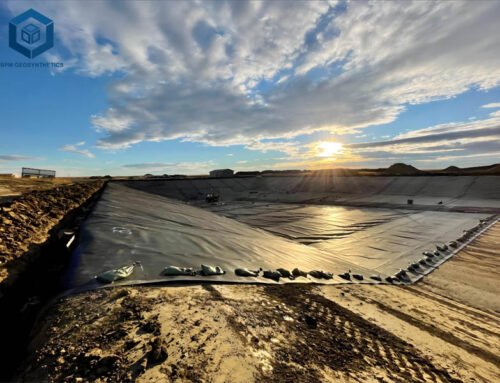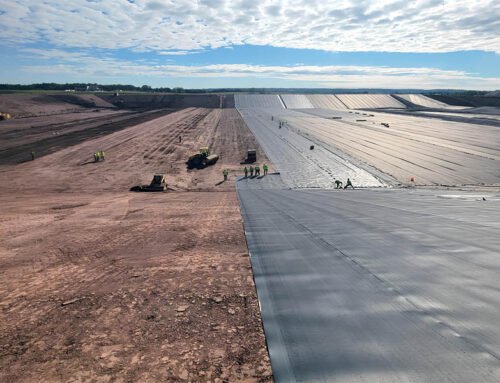In the realm of agricultural water management, selecting theIn the realm of agricultural water management, selecting the farm ponds is a selecting the appropriate HDPE sheet for farm ponds is a pivotal decision that can significantly impact the efficiency and longevity of these vital water sources. With an array of options available in the market, stakeholders often seek guidance to navigate through the myriad choices. This article delves into the nuances of choosing the right HDPE sheet, drawing insights from successful implementations showcased on the Google website by BPM Geomembrane – a leader in geosynthetic solutions.
1. What Are Basic Characteristics Of HDPE Sheet For Farm Ponds?
HDPE (High-Density Polyethylene) sheets used for farm ponds have several basic characteristics that make them suitable for this application. Firstly, they are highly resistant to chemicals and UV radiation, ensuring longevity and durability in outdoor environments. They are also flexible yet robust, allowing them to withstand various weather conditions without cracking or breaking. Furthermore, HDPE sheets are impermeable to water, which is crucial for preventing leakage and maintaining the integrity of the pond structure. Additionally, these sheets are lightweight and easy to install, making them a practical choice for constructing farm ponds. Lastly, they are cost-effective and environmentally friendly, as they can be recycled and reused for other purposes after their initial use.
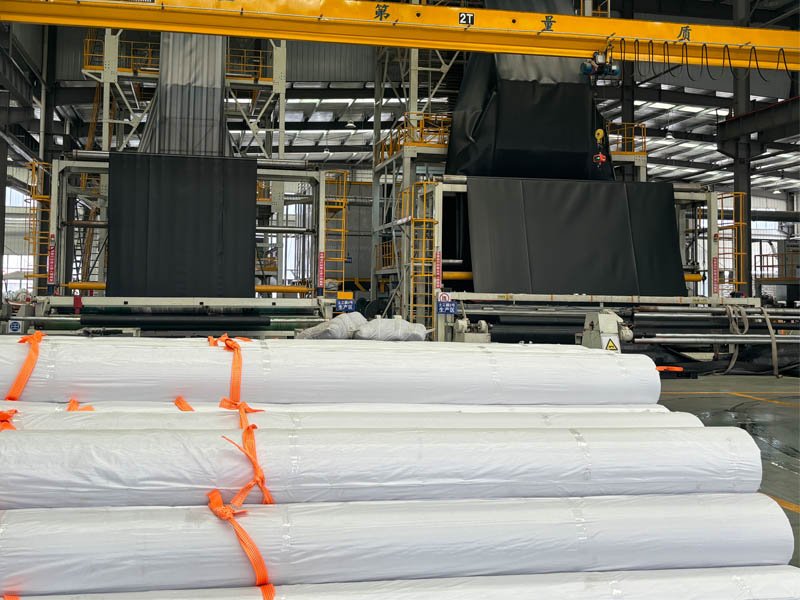
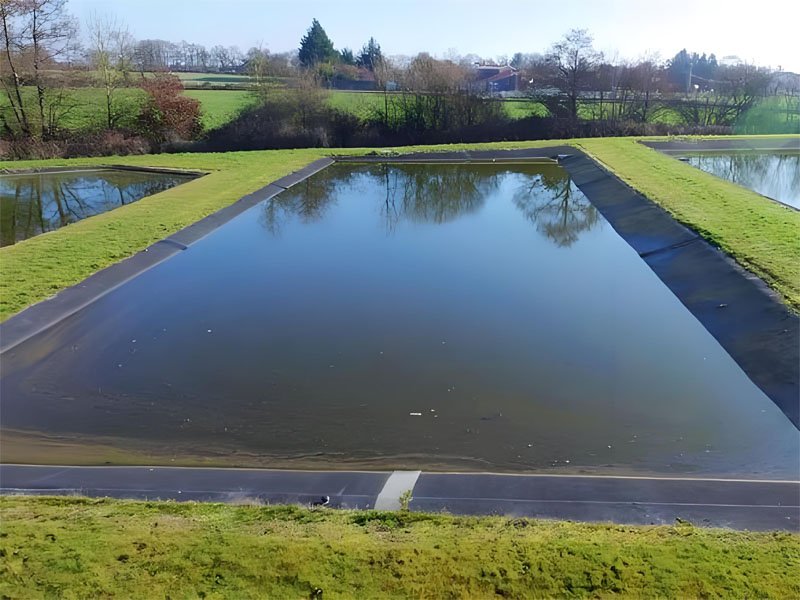
2. Why Choose HDPE Sheet For Farm Ponds?
High-Density Polyethylene (HDPE) sheets have become a popular choice for lining farm ponds, and for good reason. This material offers numerous benefits that make it an ideal solution for agricultural water management.
2.1 Success Case Analysis: HDPE Sheets in Farm Ponds
-
Durability and Longevity
One of the primary reasons for the widespread use of HDPE sheets in farm ponds is their exceptional durability. HDPE is resistant to punctures, tears, and UV radiation, ensuring that the pond remains intact and functional for many years. Unlike traditional materials such as concrete or clay, which are prone to cracking and erosion, HDPE sheets maintain their integrity over time, reducing the need for frequent repairs and replacements.
-
Cost-Effectiveness
From a financial perspective, HDPE sheets offer significant cost savings in the long run. While the initial investment may be higher compared to some alternatives, the low maintenance requirements and extended lifespan result in lower overall expenses. Additionally, HDPE sheets can be easily installed without the need for specialized equipment or labor-intensive processes, further reducing installation costs.
-
Environmental Benefits
HDPE sheets are environmentally friendly, making them a suitable choice for sustainable farming practices. The material is non-toxic and does not leach harmful chemicals into the water, ensuring that the pond’s ecosystem remains healthy. Furthermore, HDPE is recyclable, allowing farmers to minimize their environmental footprint by repurposing old sheets rather than disposing of them as waste.
2.2 Failure Case Analysis: Alternatives to HDPE Sheets
-
Concrete Liners
Concrete has been a traditional material for pond liners, but it comes with several drawbacks. Concrete is heavy and requires substantial structural support, which can be both costly and labor-intensive to implement. Additionally, concrete is susceptible to cracking and settling, leading to leaks and the potential contamination of pond water. Repairs are also more complex and expensive compared to HDPE sheets.
-
Clay Liners
Clay is another common material used for pond liners, but it presents similar challenges as concrete. While clay is naturally occurring and can be sourced locally, it is not as durable and is prone to erosion and cracking. The installation process for clay liners is labor-intensive and requires careful construction to prevent gaps and weaknesses. Moreover, clay liners are less effective at preventing water seepage compared to HDPE sheets.
3. How To Choose Right HDPE Sheet For Farm Ponds?
When it comes to choosing the right High-Density Polyethylene (HDPE) sheet for farm ponds, several factors must be taken into consideration to ensure longevity and efficiency.
3.1 Thickness and Durability:
The thickness of the HDPE sheet is paramount in determining its durability and effectiveness in lining farm ponds. Typically, a thickness ranging from 0.5 mm to 2.0 mm is recommended depending on the pond’s size and usage. Thicker sheets are generally more durable and can withstand higher water pressure and potential mechanical stresses. For larger or commercial farm ponds, opting for thicker sheets is advisable to prevent punctures and tears.
3.2 Quality of Material:
The quality of the HDPE material itself plays a crucial role in the performance of the pond liner. It’s essential to choose high-grade, UV-stabilized HDPE sheets that resist degradation from prolonged exposure to sunlight. Lower-quality materials may become brittle over time, leading to cracks and leaks. Ensure that the HDPE sheets comply with relevant industry standards and certifications to guarantee their quality and reliability.
3.3 Size and Coverage:
Properly measuring the dimensions of the farm pond is vital to determine the correct size of the HDPE sheet required. The sheet should be large enough to cover the entire surface area of the pond, including any overlapping sections necessary for secure installation. Additionally, consider the depth of the pond and any irregularities in its shape to avoid gaps or exposed areas that could lead to leaks.
3.4 Installation Ease:
Ease of installation is another important factor when selecting an HDPE sheet for farm ponds. Look for sheets that come with clear instructions and are designed for straightforward installation processes. Pre-fabricated sheets with pre-cut shapes or customizable options can simplify the setup and reduce the risk of errors during installation.
3.5 Cost-Effectiveness:
While cost should not be the sole determinant, it is an essential consideration. Balancing quality and affordability is key to making a wise investment. Obtain quotes from multiple suppliers and compare not only the prices but also the warranty and after-sales services offered. Remember that a slightly higher upfront cost for a superior product can result in significant savings over time through reduced maintenance and replacement needs.
3.6 Environmental Impact:
Consider the environmental impact of the HDPE sheet you choose. Opt for sheets that are manufactured using eco-friendly processes and materials. Additionally, ensure that the sheets are recyclable at the end of their lifespan to minimize environmental footprint.
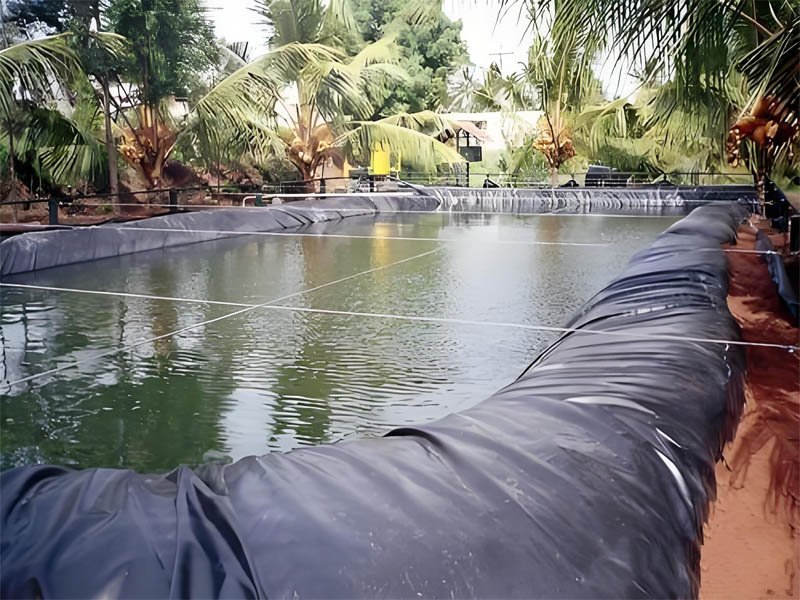
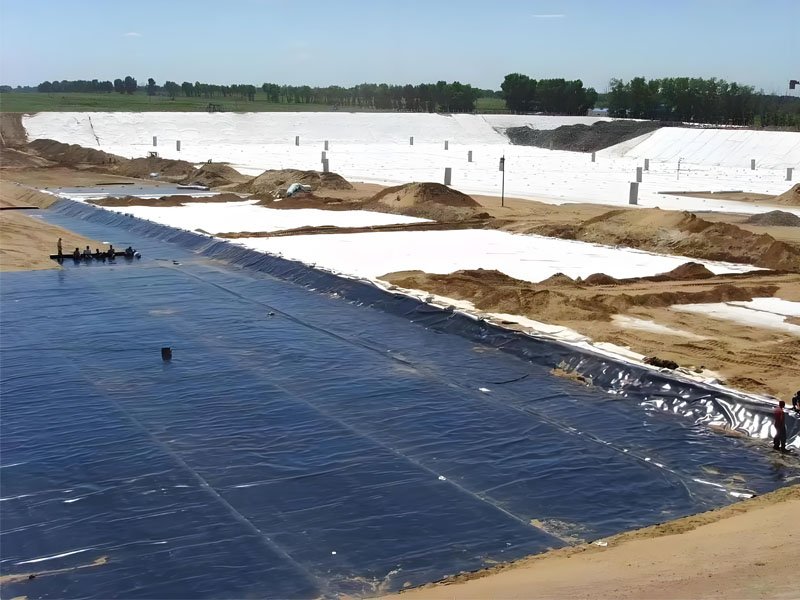
4. Installation and Maintenance Guide Of HDPE Sheet For Farm Ponds
4.1 Installation Steps:
4.11 Site Preparation:
- Ensure the pond area is clear of rocks, roots, and sharp objects.
- Level the ground to provide a smooth surface for the geomembrane.
4.12 Unrolling the Geomembrane:
- Carefully unroll the HDPE geomembrane sheet over the pond area.
- Allow for some overlap on the edges for a secure fit.
4.13 Securing the Geomembrane:
- Secure the geomembrane in place using rocks or other heavy objects around the edges.
- Make sure the geomembrane is flat and free of wrinkles.
4.14 Testing for Leaks:
- Fill the pond slowly with water and inspect for any leaks.
- Patch any leaks promptly using compatible materials.
4.2 Maintenance Tips:
4.21 Regular Inspections:
- Periodically inspect the geomembrane for signs of damage or wear.
- Address any issues promptly to prevent leaks.
4.22 Vegetation Management:
- Control vegetation growth around the pond to prevent root penetration.
- Trim overhanging branches to avoid damage to the geomembrane.
4.23 Debris Removal:
- Remove any debris that accumulates on the geomembrane surface.
- Clean the geomembrane periodically to maintain its effectiveness.
4.24 Repairing Damage:
- If damage occurs, follow manufacturer guidelines for repairing the geomembrane.
- Use appropriate repair materials and techniques to ensure a secure seal.
5. Summary
In conclusion, selecting the right HDPE sheet for farm ponds is a crucial decision that can significantly impact the longevity and efficiency of your agricultural water management system. It is essential to consider factors such as material quality, thickness, UV resistance, and installation methods to ensure optimal performance and durability. By investing in high-quality HDPE sheets and following proper installation practices, farmers can create robust and reliable farm ponds that will serve their needs for years to come.


